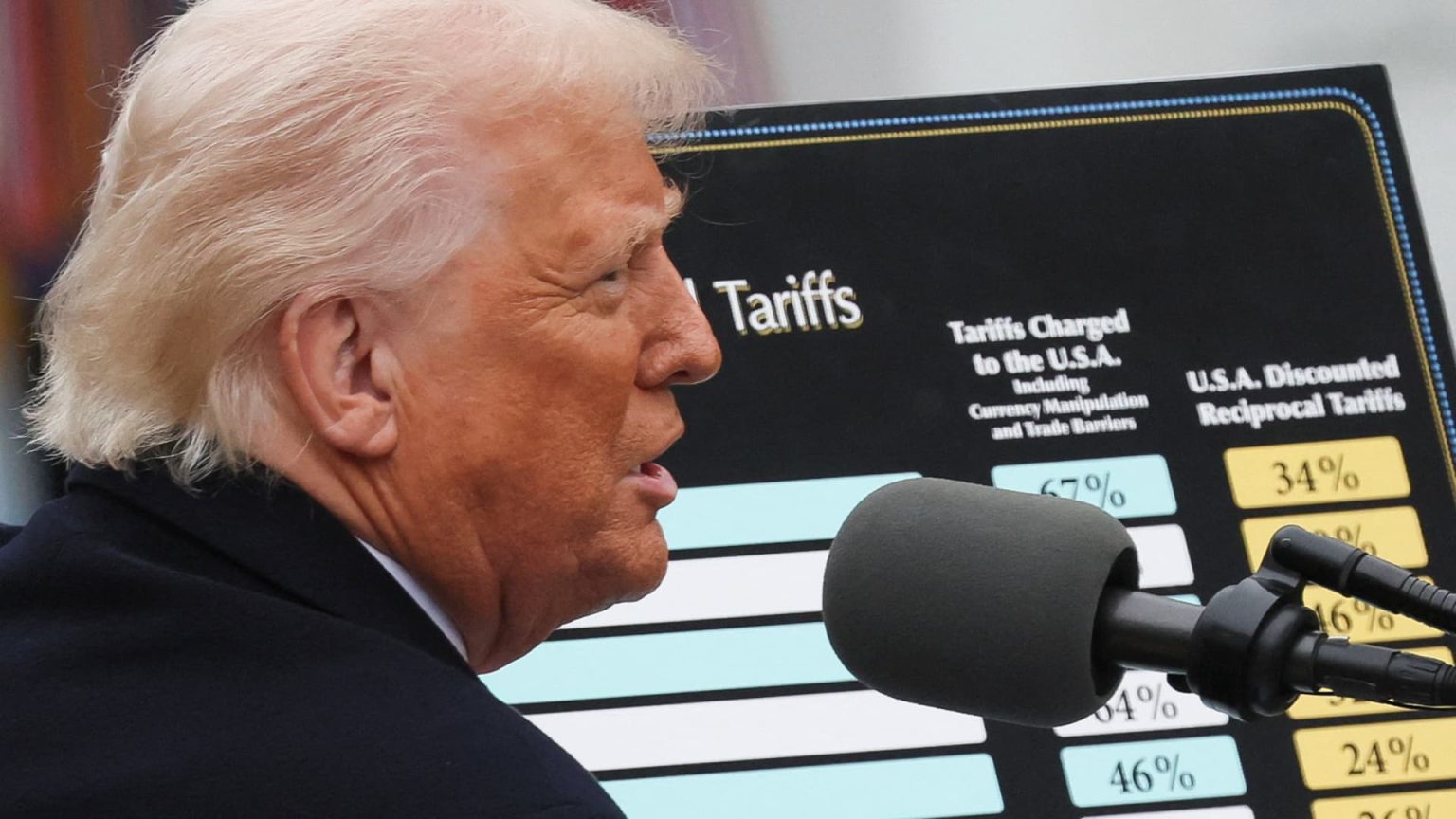In a significant announcement from the White House, President Donald Trump unveiled a new trade policy characterized by “reciprocal tariffs” that will impact more than 180 nations, including members of the European Union. This policy aims to address what Trump describes as unfair trade practices and currency manipulation by other countries. The proposed tariffs will vary by nation, with rates set to be approximately half of what is currently imposed on the U.S., potentially heightening tensions in international trade relations.
| Article Subheadings |
|---|
| 1) Overview of New Tariff Policy |
| 2) Countries Affected by Tariffs |
| 3) Details on Specific Tariff Rates |
| 4) Implications for U.S.-China Trade Relations |
| 5) Reactions from Global Economic Leaders |
Overview of New Tariff Policy
President Donald Trump’s announcement on April 2, 2025, marks a crucial shift in U.S. trade policy, focusing on “reciprocal tariffs” as a means to counteract perceived unfair trade practices from abroad. The initiative aims to adjust the tariff landscape so that U.S. rates are reflective of what other nations impose on American goods. Under this policy, all countries will face a baseline tariff of 10%, although many countries will encounter considerably higher rates based on their current tariff structures. Trump articulated the need for this policy as a critical response to what his administration views as a long history of economic imbalances favoring foreign interests.
Countries Affected by Tariffs
The reciprocal tariffs will impact a broad spectrum of nations, significantly including members of the European Union and various trading partners across the globe. More than 180 countries and territories are subject to this new structure. The White House has indicated that varying rates will apply to different countries reflecting prior tariff impositions by those nations on U.S. exports. This sweeping approach aims to equalize the playing field by ensuring that U.S. tariffs are not disproportionately low relative to foreign tariffs, countering what the Trump administration describes as “currency manipulation” and “trade barriers” employed by other countries.
Details on Specific Tariff Rates
According to visual data shared by the White House through social media channels, the breakdown of specific tariff rates will be communicated. The rates aimed at individual countries are expected to reflect approximately half of what they have been charging the U.S. According to President Trump, this approach puts pressure on these nations to reconsider their own tariff structures, as the U.S. seeks to establish a more equitable system of international trade. However, it’s essential to note that these new reciprocal tariffs will not be the sole tariffs faced by these countries, particularly for significant trading partners like China.
Implications for U.S.-China Trade Relations
One of the most significant areas affected by the new tariff policy is the U.S.-China trade relationship. While the newly introduced reciprocal tariff on China is set to be additional to existing tariffs, which total 20%, the cumulative effect results in a striking effective tariff rate of 54%. This escalated tariff structure reflects ongoing tensions between the U.S. and China regarding trade practices and market access. The Trump administration has framed this approach as vital to enforcing fair trading practices, emphasizing that the new tariff will apply to Chinese goods retaliatory to their previous tactics that have been detrimental to U.S. economic interests.
Reactions from Global Economic Leaders
As the news of the reciprocal tariffs spreads, reactions from global economic leaders and various trade organizations have begun to surface. Many analysts express concern over the potential for increased trade tensions and a subsequent trade war, particularly with notable trading partners like the European Union and China. Critics argue that such policies threaten to disrupt global supply chains and escalate costs for consumers in the U.S. On the other hand, supporters of Trump’s approach believe that this measure may compel trading partners to engage in negotiations aimed at reducing their own tariffs. As the world watches closely, the policy’s long-term impacts remain uncertain.
| No. | Key Points |
|---|---|
| 1 | President Trump’s new trade policy introduces ‘reciprocal tariffs’ affecting over 180 nations. |
| 2 | A baseline tariff of 10% will be applied, with many countries facing higher specific rates. |
| 3 | The new tariffs primarily aim to equalize burdens on U.S. and foreign producers. |
| 4 | China faces a combined total effective tariff rate of 54% due to additional tariffs. |
| 5 | Reactions from global leaders highlight significant concerns about escalating trade disputes. |
Summary
In conclusion, President Trump’s new reciprocal tariff policy represents a bold approach aimed at addressing long-standing grievances in international trade practices. By targeting over 180 countries, including major economic players like China, the initiative seeks to create a fairer trading system for American producers. However, the policy could provoke retaliatory measures abroad, leading to escalating tensions in global trade dynamics that warrant close scrutiny in the coming months.
Frequently Asked Questions
Question: What are reciprocal tariffs?
Reciprocal tariffs are tariffs imposed by one country on another, reflecting the tariffs that the other country imposes on its goods. The goal is to level the playing field in trade relations.
Question: How will these tariffs affect U.S. consumers?
U.S. consumers may face higher prices on imported goods due to the increased tariffs. This could lead to a rise in overall costs for products that rely on foreign supply chains.
Question: What are the anticipated outcomes of this policy?
The anticipated outcomes include negotiations for lower tariffs from other countries, potential retaliation, and disrupted trade relationships, particularly with major trading partners.


